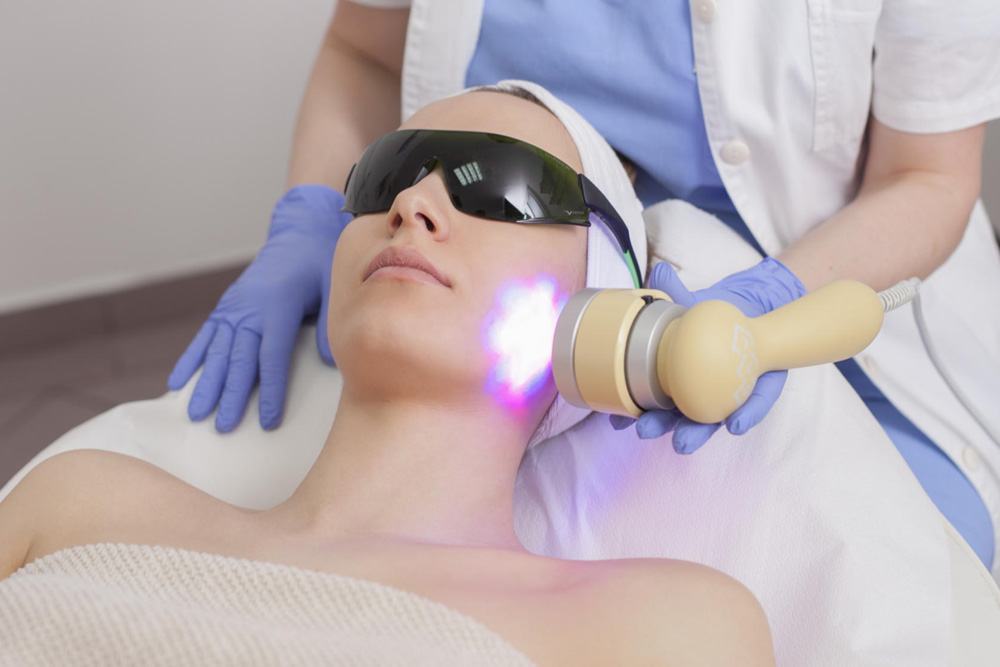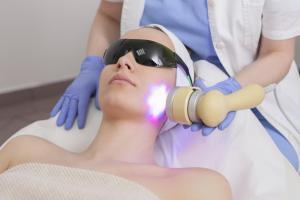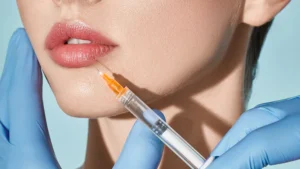Intense Pulsed Light Therapy, commonly known as IPL, is a non-invasive and versatile treatment that is gaining popularity for its ability to address various skin concerns. In this comprehensive article, we will delve into the world of IPL and explore its mechanisms, benefits, and potential side effects. From reducing signs of aging to treating sun damage, improving skin texture, and minimizing acne and scarring, IPL offers a wide range of benefits that cater to diverse skin needs.
We will discuss the areas that can be effectively treated with IPL and provide insights into preparing for and recovering from IPL sessions. We will address the optimal number of sessions required for achieving the best results. As an alternative to IPL, we will also explore other skin therapy options such as laser therapy, chemical peels, and microdermabrasion.
Whether you are considering IPL for the first time or seeking to expand your knowledge on advanced skincare treatments, this article aims to equip you with valuable information to make informed decisions about your skin health.
What Is Intense Pulsed Light Therapy (IPL)?
Intense Pulsed Light Therapy (IPL) is a non-invasive treatment that uses specific wavelengths of light to target various skin conditions and imperfections.
It is commonly known as photofacial or photorejuvenation and is often utilized to address concerns such as sun damage, age spots, rosacea, and fine lines. IPL works by delivering pulses of light energy to the skin, which stimulates collagen production and breaks up melanin pigments, resulting in a more even skin tone and texture.
The IPL equipment employed in these treatments generates broad-spectrum light that is absorbed by the targeted areas, without harming the surrounding tissues. The focused energy can also reduce redness, minimize pore size, and improve the appearance of scars, making it a versatile and effective technique for enhancing skin health and appearance.
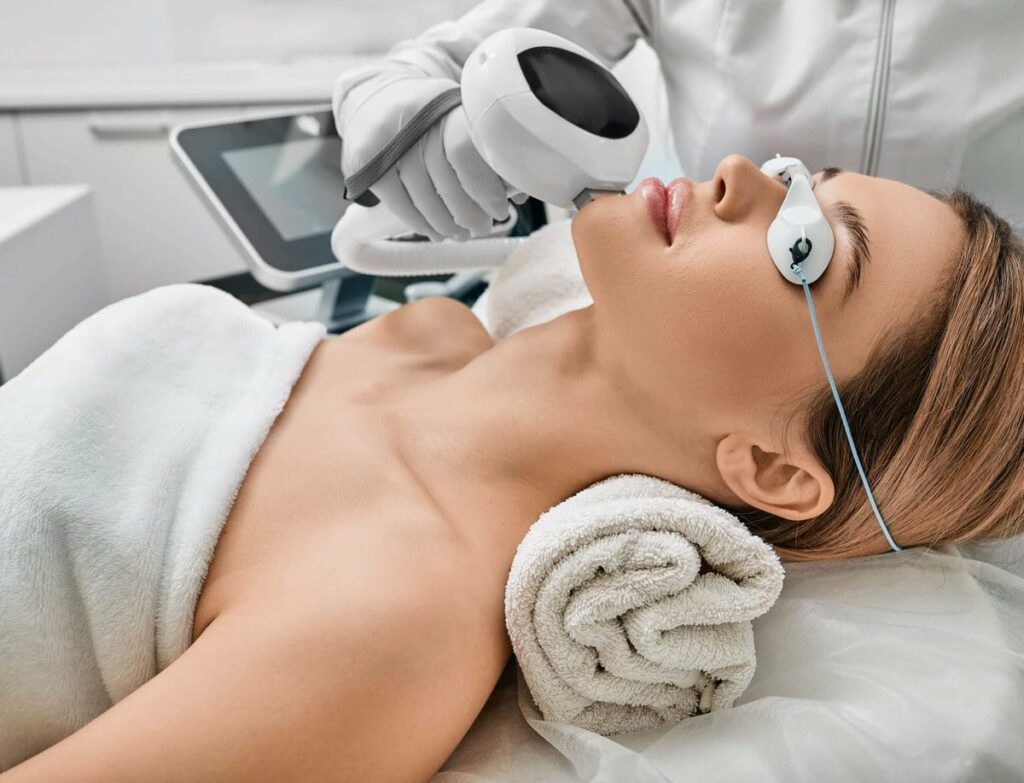
How Does IPL Work?
IPL works by delivering pulses of light energy into the skin, targeting pigmented lesions, age spots, and blood vessels, while promoting collagen production and skin rejuvenation.
This intense pulsed light therapy is a popular FDA-approved non-invasive cosmetic procedure. During treatment, the IPL device emits various wavelengths of light, which are absorbed by the targeted skin imperfections. The absorbed light energy is then converted to heat, destroying the unwanted pigments and stimulating the production of new collagen. This dual action effectively diminishes the appearance of age spots, sun damage, redness, and vascular lesions, contributing to a smoother, more radiant skin tone.
The heat energy initiates the skin’s natural healing process, leading to overall skin rejuvenation and improved texture.
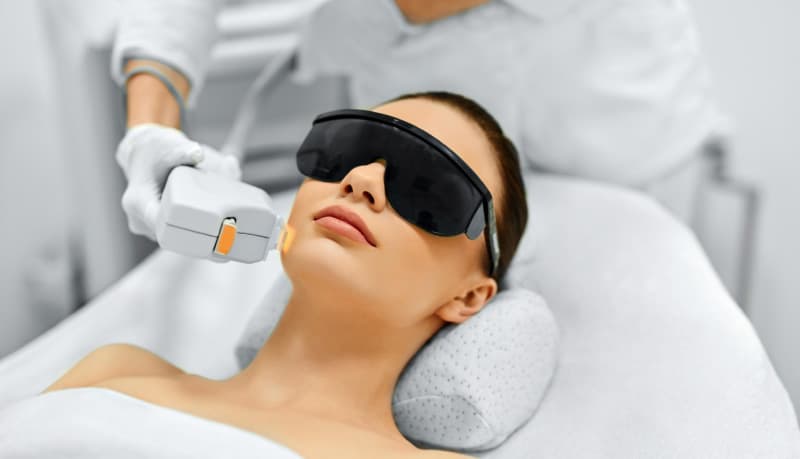
What Are the Benefits of IPL?
IPL offers several benefits, including the ability to fade age spots, reduce wrinkles, and alleviate redness associated with skin conditions such as rosacea, while also targeting vascular lesions.
Reduces Signs of Aging
IPL treatment effectively reduces signs of aging by targeting age spots, stimulating collagen production, and minimizing the appearance of wrinkles.
The IPL technology works by emitting intense pulses of light that penetrate the skin and target the excess pigment of age spots, breaking it down to reduce their appearance. The heat generated by the treatment stimulates the production of collagen, which helps in firming and tightening the skin, reducing the visibility of wrinkles. This dual-action approach makes IPL an effective solution for addressing multiple signs of aging, promoting a more youthful and rejuvenated complexion.
Treats Sun Damage
IPL is beneficial for treating sun damage by targeting pigmented lesions, promoting skin rejuvenation, and improving overall skin tone and texture.
With its precise wavelength of light, IPL penetrates the skin, effectively breaking down excess melanin in the pigmented lesions caused by sun exposure. This process not only diminishes sun-induced pigmentation but also stimulates the skin’s natural rejuvenation processes, triggering collagen production and accelerating cellular turnover.
The improvement in skin texture is noticeable as IPL encourages the sloughing off of damaged, pigmented cells, revealing fresher, more youthful skin. IPL sessions actively support the reduction of fine lines, wrinkles, and other signs of photodamage, aiding in overall skin revitalization.
The positive impact of IPL on sun-induced pigmentation, skin rejuvenation, and texture enhancement makes it a popular choice for individuals seeking comprehensive solutions for sun damage and aging effects.
Improves Skin Texture
IPL therapy aids in improving skin texture by stimulating collagen production, reducing fine lines, and enhancing overall skin rejuvenation.
Collagen, a crucial protein responsible for maintaining skin firmness and elasticity, diminishes with age, leading to the appearance of wrinkles. IPL targets areas of concern, triggering the body’s natural healing process to produce more collagen, resulting in smoother and plumper skin. IPL’s ability to reduce fine lines and support overall skin rejuvenation makes it a sought-after treatment for addressing signs of aging and promoting a more youthful complexion.
Reduces Acne and Scarring
IPL treatment contributes to reducing acne and scarring, addressing common skin conditions and promoting a smoother, clearer complexion.
Through the use of intense pulsed light, IPL targets the sebaceous glands, reducing excess oil production and preventing clogged pores. This treatment also diminishes inflammation caused by acne, helping to minimize redness and swelling. In addition, IPL stimulates collagen production, aiding in the healing of acne scars and promoting skin rejuvenation. With its ability to target multiple skin concerns, IPL offers a comprehensive approach to achieving a healthier, blemish-free complexion.
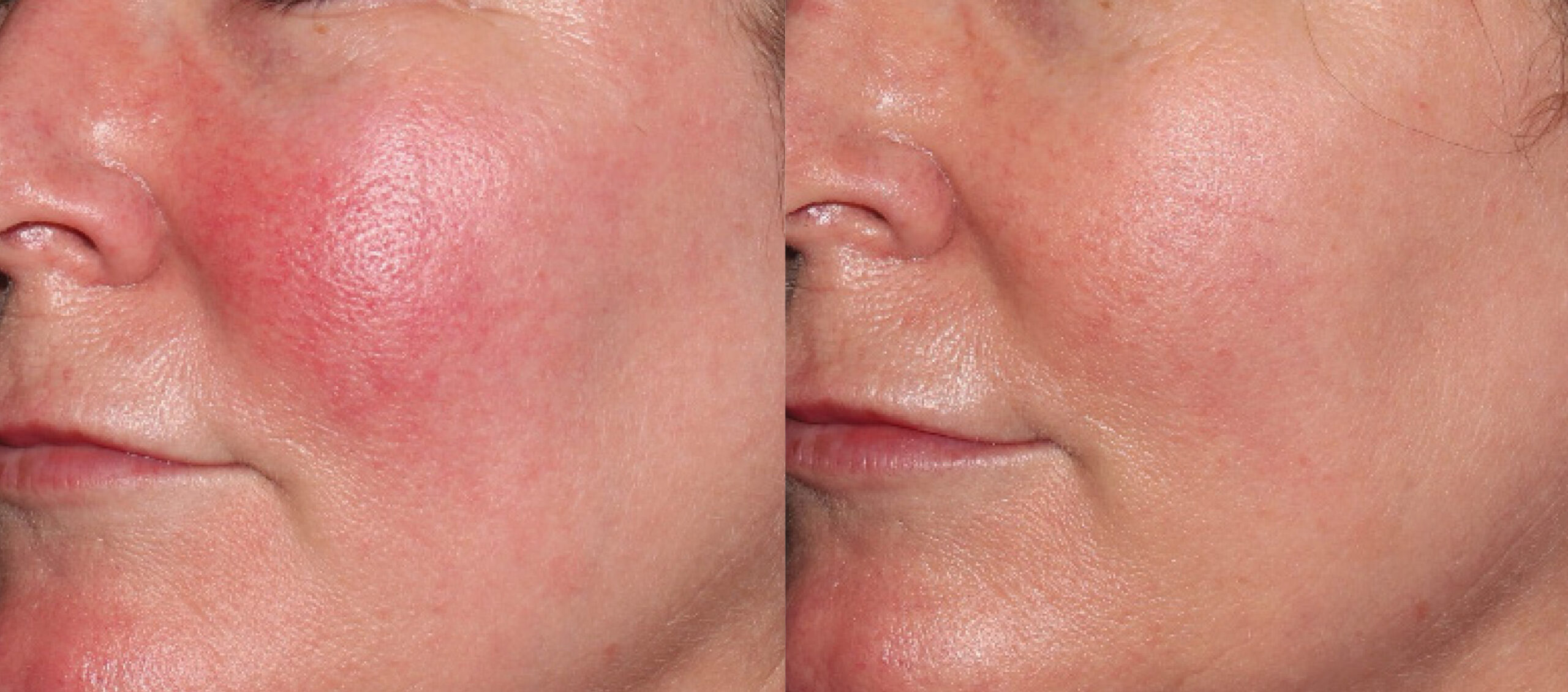
What Areas Can Be Treated with IPL?
IPL can effectively treat various areas of the body, targeting skin conditions and vascular lesions across areas such as the face, neck, chest, and hands.
IPL has shown promising results in addressing concerns on the arms, legs, and back. It can effectively reduce age spots, sun damage, birthmarks, and other pigmentation issues, enhancing the overall complexion.
IPL is also beneficial for diminishing spider veins and rosacea, providing a more even and rejuvenated appearance to the treated areas.
What Are the Side Effects of IPL?
While IPL is generally safe, some common side effects may include temporary redness, swelling, hyperpigmentation, and in rare cases, blistering.
It is important to note that the severity of these side effects can vary depending on an individual’s skin type and the treatment area.
Temporary redness and swelling usually subside within a few hours to a couple of days, but in some cases, they may persist for a longer period.
Hyperpigmentation, characterized by darkened areas of skin, may occur more frequently in individuals with a darker skin tone. This is typically a temporary side effect but can persist for several weeks or months in some cases.
On the other hand, blistering is a rare but concerning side effect that necessitates immediate medical attention. It presents as the formation of fluid-filled blisters on the skin and requires prompt evaluation by a healthcare professional.
Redness and Swelling
Redness and swelling are common and temporary skin reactions following IPL treatment, typically resolving within a few days.
These reactions are the body’s natural response to the energy delivered during the treatment. Redness is caused by increased blood flow to the treated area while swelling results from tissue inflammation.
It’s essential to understand that these reactions are normal and expected, serving as indicators of the skin’s healing process. They are typically more pronounced after the first treatment and tend to diminish with subsequent sessions.
Many individuals find relief by applying cooling packs or aloe vera gel to the treated area. If the redness or swelling persists for an extended period, it’s advisable to consult with a dermatologist for further evaluation.
Hyperpigmentation
Hyperpigmentation, characterized by skin discoloration, is a potential side effect of IPL treatment due to excessive melanin production, but it is often transient and reversible.
When the intense pulsed light (IPL) targets the melanin in the skin to treat pigmentation issues or hair removal, it can sometimes stimulate the overproduction of melanin, leading to hyperpigmentation. This overactivity of melanocytes can cause darker spots or patches on the skin, particularly in individuals with higher levels of melanin. It’s important to note that this hyperpigmentation is usually temporary and fades over time, as the skin’s natural exfoliation process and cell turnover help to gradually normalize the pigmentation.
Blistering
Blistering, though rare, is a severe skin reaction following IPL treatment, requiring prompt attention and medical evaluation for appropriate management.
When blistering occurs after an IPL treatment, it is essential to seek medical advice without delay. This reaction, while uncommon, can lead to complications if not addressed promptly. It is important to understand that blistering is a sign of significant skin irritation and should not be overlooked. Whether it is accompanied by pain, swelling, or warmth, seeking medical evaluation becomes imperative in order to prevent potential scarring or other long-term effects.
How to Prepare for an IPL Treatment?
Preparing for an IPL treatment involves adhering to specific skincare regimens, avoiding sun exposure, and following pre-treatment instructions provided by the dermatologist or healthcare professional.
One of the crucial steps in preparing for an IPL treatment is to establish a routine skincare regimen that includes gentle cleansing, moisturizing, and using sunscreen daily to protect the skin from potential damage. It’s essential to minimize sun exposure and use protective clothing or broad-spectrum sunscreen with an SPF of 30 or higher.
Following the pre-treatment instructions, such as avoiding certain skincare products or medications, is vital to ensure the effectiveness and safety of the IPL procedure.
What to Expect During and After an IPL Treatment?
During an IPL treatment, patients can expect a series of light pulses targeting specific skin concerns, followed by mild post-treatment effects that may include temporary redness and slight discomfort, which can be managed with a prescribed skincare routine.
After the IPL treatment, it is essential to protect the treated skin from direct sunlight and avoid excessive heat exposure for a few days. Following the recommended skincare regimen, including gentle cleansing and moisturizing, can help alleviate any residual redness or sensitivity. It’s crucial to stay hydrated and maintain a balanced diet to support the skin’s healing process. Most individuals experience noticeable improvements in skin texture and tone within a few weeks of their IPL treatment, with minimal disruption to their daily activities.
How Many IPL Sessions Are Needed for Optimal Results?
The number of IPL sessions required for optimal results varies based on individual skin concerns and the desired level of skin improvement, typically ranging from 3 to 6 sessions spaced several weeks apart.
Factors such as skin type, the extent of sun damage, pigmentation issues, and vascular conditions play a significant role in determining the number of sessions needed. For those seeking to address specific concerns such as acne scars or sunspots, more sessions may be necessary to achieve the desired results. Likewise, individuals aiming for overall skin rejuvenation may also require additional sessions to achieve optimal improvement levels.
Consulting with a skincare professional is crucial to developing a personalized treatment plan tailored to individual needs.
What Are the Alternatives to IPL?
Alternatives to IPL include laser therapy, chemical peels, and microdermabrasion, each offering distinct approaches to skin rejuvenation and addressing specific skin conditions.
Laser therapy utilizes focused beams of light to target specific skin concerns, such as pigmentation, fine lines, and acne scars, stimulating collagen production and promoting skin renewal. Chemical peels, on the other hand, involve the application of a chemical solution to exfoliate the outer layer of the skin, revealing smoother and more youthful-looking skin. Meanwhile, microdermabrasion employs gentle exfoliation to improve skin texture and tone, making it an ideal option for individuals seeking a non-invasive treatment for skin rejuvenation.
Laser Therapy
Laser therapy serves as an alternative to IPL, utilizing focused light energy for skin resurfacing and addressing dermatological conditions with precision and effectiveness.
The application of laser therapy offers a targeted approach to specific skin concerns, such as wrinkles, scars, and age spots. Its ability to penetrate the skin’s layers with controlled precision allows for accurate treatment of problematic areas, resulting in minimal damage to surrounding tissues. The precision of laser therapy makes it a suitable option for individuals seeking to address specific dermatological conditions without affecting the surrounding healthy skin.
Chemical Peels
Chemical peels offer an alternative approach to skin rejuvenation, involving exfoliation and targeted skincare treatments to address specific skin concerns and enhance skin texture and tone.
Unlike IPL, which primarily focuses on addressing pigmentation and redness, chemical peels work by applying a chemical solution to the skin, causing it to exfoliate and eventually peel off, revealing a fresh layer of skin beneath. This process not only helps to improve skin texture and tone but also stimulates the production of collagen and elastin, promoting overall skin health and resilience.
Additionally, different types of chemical peels are available, such as superficial, medium, and deep peels, allowing for personalized treatment options tailored to individual skin concerns and sensitivities.
Microdermabrasion
Microdermabrasion presents an alternative to IPL, offering non-invasive skin exfoliation and rejuvenation through gentle abrasive treatments, promoting skin renewal and radiance.
Unlike IPL, microdermabrasion focuses on mechanical exfoliation using a handheld device with a diamond or crystal tip to gently remove the top layer of dead skin cells. This non-ablative procedure encourages the production of collagen and elastin, resulting in smoother, more youthful-looking skin.
The treatment is suitable for various skin types and tones, making it a versatile option for individuals seeking to address concerns such as fine lines, uneven texture, and superficial pigmentation.
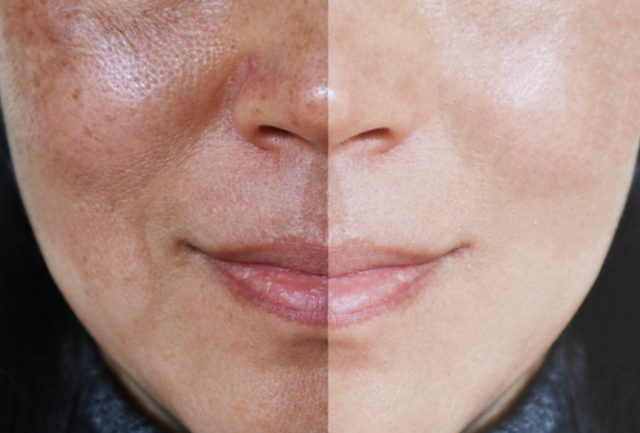
Frequently Asked Questions
What is Intense Pulsed Light (IPL) Therapy and how does it work in San Francisco?
IPL Therapy is a non-invasive skin treatment that uses intense pulses of light to target specific areas and improve skin conditions. It works by delivering light energy to the skin, which is absorbed by melanin and hemoglobin, resulting in a more even skin tone and reduced appearance of imperfections.
What are the benefits of Intense Pulsed Light (IPL) Therapy in San Francisco?
IPL Therapy can effectively treat a variety of skin concerns, including sun damage, age spots, acne scars, and fine lines. It can also improve skin texture, reduce redness and rosacea, and stimulate collagen production for a more youthful appearance.
Is Intense Pulsed Light (IPL) Therapy safe for all skin types in San Francisco?
Yes, IPL Therapy is safe for all skin types, including darker skin tones. However, it is important to consult with a trained professional to determine if IPL Therapy is the right treatment for your specific skin concerns.
How many sessions of Intense Pulsed Light (IPL) Therapy are needed for optimal results in San Francisco?
The number of sessions needed for optimal results can vary depending on the individual’s skin concerns and goals. Generally, a series of 3-6 treatments spaced 4-6 weeks apart is recommended for best results.
What can I expect during and after an Intense Pulsed Light (IPL) Therapy session in San Francisco?
During the session, you may experience a warm sensation and slight discomfort, similar to a rubber band snapping against the skin. After the treatment, your skin may appear red and slightly swollen, but these side effects typically subside within a few hours.
Are there any potential side effects of Intense Pulsed Light (IPL) Therapy in San Francisco?
Some potential side effects of IPL Therapy may include temporary redness, swelling, and mild blistering. These side effects are usually mild and subside within a few hours. It is important to follow post-treatment care instructions provided by your provider to minimize any potential risks.
